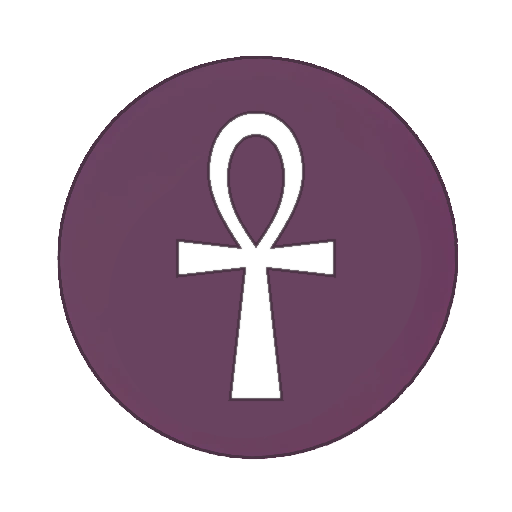Kant, the Stoics, and the Beauty of Reason
-
Although separated by sixteen centuries, Immanuel Kant and Marcus Aurelius share a conviction that the experience of beauty exposes a fundamental relation between reason and moral life. Both thinkers view aesthetic perception not as a matter of taste or pleasure but as a disciplined awareness of order. In Kant’s Critique of Judgment and Marcus Aurelius’s Meditations, beauty stands at the meeting point of nature and rational reflection. For Marcus, beauty reveals the harmony of the cosmos, a visible sign of divine reason. For Kant, beauty discloses the harmony of the mind’s own faculties, which mirror the rational order that moral law requires. The distinction between them arises from the source of that order: the Stoic finds it in nature, while the Kantian finds it in human autonomy.
In Meditations, written in Greek during Marcus’s northern campaigns between 170 and 180 CE, the emperor philosopher presents beauty as inseparable from both ethics and metaphysics. His reflections, composed as personal exercises rather than for public instruction, reveal a mind training itself to see purpose in every aspect of existence. He continually insists that the world is governed by logos, the rational principle that shapes all things. In Book IV, sections 23 through 27, Marcus observes that even apparently imperfect forms possess beauty because they express the operation of natural law. The cracks in a loaf of bread or the wrinkles of an old face please the eye precisely because they arise from the inner logic of life. To recognize such beauty is to accept that what happens necessarily follows the design of reason. In Book V, section 3, he writes that “to live in accordance with nature is to live according to reason,” and in Book VI, sections 36 through 42, he extends this to the entire cosmos, asserting that the same law orders the stars, the elements, and the human soul. For Marcus, the act of seeing beauty becomes an act of moral assent. By perceiving order in what exists, one learns to will what nature wills and to find tranquility in necessity.
Kant preserves the link between beauty and reason but changes the metaphysical foundation upon which it rests. In the Critique of Judgment (1790), he defines aesthetic judgment as the experience of “disinterested pleasure.” The mind takes delight in an object when imagination and understanding operate in a free harmony without the direction of a determinate concept. Beauty appears as if it were purposive although it serves no purpose. This paradoxical structure has profound moral significance. In appreciating beauty without desire, the subject practices the same discipline required by moral law. Just as moral action proceeds from duty rather than inclination, aesthetic judgment values form apart from any practical interest. Beauty therefore becomes a preparation for ethical life. It trains the will to respect order for its own sake and to recognize the dignity of reason as the source of freedom.
The parallel between Stoic and Kantian thought becomes clearest when Kant turns to the concept of the sublime. In this experience, reason asserts its independence from overwhelming natural forces. Standing before the vastness of mountains or the terror of a storm, the individual feels the limits of sensory power yet simultaneously recognizes the superiority of rational will. The Stoic would describe the same situation in terms of virtue and endurance. Marcus repeatedly reminds himself that nothing external can truly harm the rational soul because the soul has the power to interpret events according to its own understanding. Where Kant speaks of transcendence, Marcus speaks of consent. Both describe the same act of inner sovereignty: the moment when reason affirms itself against the contingency of nature. The emperor endures the storm by aligning his will with universal law. The philosopher of Königsberg endures it by realizing that reason itself is the author of law.
In both traditions, beauty functions as an education of the moral sense. Marcus Aurelius teaches that serenity arises from perceiving the rational order of nature and embracing one’s role within it. Kant teaches that freedom arises from recognizing reason’s capacity to legislate that order within the mind. Each system transforms aesthetic awareness into ethical formation. To contemplate beauty, whether in the unfolding of nature or in the free play of the faculties, is to participate in the discipline of virtue.
For Marcus, the harmony of the world is the reflection of divine reason working through necessity. For Kant, the harmony of judgment is the reflection of autonomous reason working through freedom. Both converge on a single conclusion: to understand order, either in the cosmos or in thought itself, is already to act as a moral being. The Stoic’s acceptance of fate and the Kantian’s reverence for duty express the same faith in the power of rational understanding. Beauty, in both cases, becomes the visible or intelligible form of that faith. It is the point where seeing and knowing become acts of moral insight, and where reason, contemplating order, discovers its own freedom.
-
Although separated by sixteen centuries, Immanuel Kant and Marcus Aurelius share a conviction that the experience of beauty exposes a fundamental relation between reason and moral life. Both thinkers view aesthetic perception not as a matter of taste or pleasure but as a disciplined awareness of order. In Kant’s Critique of Judgment and Marcus Aurelius’s Meditations, beauty stands at the meeting point of nature and rational reflection. For Marcus, beauty reveals the harmony of the cosmos, a visible sign of divine reason. For Kant, beauty discloses the harmony of the mind’s own faculties, which mirror the rational order that moral law requires. The distinction between them arises from the source of that order: the Stoic finds it in nature, while the Kantian finds it in human autonomy.
In Meditations, written in Greek during Marcus’s northern campaigns between 170 and 180 CE, the emperor philosopher presents beauty as inseparable from both ethics and metaphysics. His reflections, composed as personal exercises rather than for public instruction, reveal a mind training itself to see purpose in every aspect of existence. He continually insists that the world is governed by logos, the rational principle that shapes all things. In Book IV, sections 23 through 27, Marcus observes that even apparently imperfect forms possess beauty because they express the operation of natural law. The cracks in a loaf of bread or the wrinkles of an old face please the eye precisely because they arise from the inner logic of life. To recognize such beauty is to accept that what happens necessarily follows the design of reason. In Book V, section 3, he writes that “to live in accordance with nature is to live according to reason,” and in Book VI, sections 36 through 42, he extends this to the entire cosmos, asserting that the same law orders the stars, the elements, and the human soul. For Marcus, the act of seeing beauty becomes an act of moral assent. By perceiving order in what exists, one learns to will what nature wills and to find tranquility in necessity.
Kant preserves the link between beauty and reason but changes the metaphysical foundation upon which it rests. In the Critique of Judgment (1790), he defines aesthetic judgment as the experience of “disinterested pleasure.” The mind takes delight in an object when imagination and understanding operate in a free harmony without the direction of a determinate concept. Beauty appears as if it were purposive although it serves no purpose. This paradoxical structure has profound moral significance. In appreciating beauty without desire, the subject practices the same discipline required by moral law. Just as moral action proceeds from duty rather than inclination, aesthetic judgment values form apart from any practical interest. Beauty therefore becomes a preparation for ethical life. It trains the will to respect order for its own sake and to recognize the dignity of reason as the source of freedom.
The parallel between Stoic and Kantian thought becomes clearest when Kant turns to the concept of the sublime. In this experience, reason asserts its independence from overwhelming natural forces. Standing before the vastness of mountains or the terror of a storm, the individual feels the limits of sensory power yet simultaneously recognizes the superiority of rational will. The Stoic would describe the same situation in terms of virtue and endurance. Marcus repeatedly reminds himself that nothing external can truly harm the rational soul because the soul has the power to interpret events according to its own understanding. Where Kant speaks of transcendence, Marcus speaks of consent. Both describe the same act of inner sovereignty: the moment when reason affirms itself against the contingency of nature. The emperor endures the storm by aligning his will with universal law. The philosopher of Königsberg endures it by realizing that reason itself is the author of law.
In both traditions, beauty functions as an education of the moral sense. Marcus Aurelius teaches that serenity arises from perceiving the rational order of nature and embracing one’s role within it. Kant teaches that freedom arises from recognizing reason’s capacity to legislate that order within the mind. Each system transforms aesthetic awareness into ethical formation. To contemplate beauty, whether in the unfolding of nature or in the free play of the faculties, is to participate in the discipline of virtue.
For Marcus, the harmony of the world is the reflection of divine reason working through necessity. For Kant, the harmony of judgment is the reflection of autonomous reason working through freedom. Both converge on a single conclusion: to understand order, either in the cosmos or in thought itself, is already to act as a moral being. The Stoic’s acceptance of fate and the Kantian’s reverence for duty express the same faith in the power of rational understanding. Beauty, in both cases, becomes the visible or intelligible form of that faith. It is the point where seeing and knowing become acts of moral insight, and where reason, contemplating order, discovers its own freedom.
Quality post. I found Kant the hardest readings during my philosophy degree!
-
Quality post. I found Kant the hardest readings during my philosophy degree!
I heard Aurelius is supposed to be easy but I find it not that easy, the old timey English of the translation is not that clear to me. But I'm just a dummy trying to read once in a blue moon. Zhuangzi was a bit easier in my opinion.
-
Quality post. I found Kant the hardest readings during my philosophy degree!
Yes. Oh Yes and I had Dr. Daryl Hale breaking it down for me. Of course I had him at the beginning of his teaching career so I am sure he got better at it over the years. My god that was almost 40 years ago. I am old.


